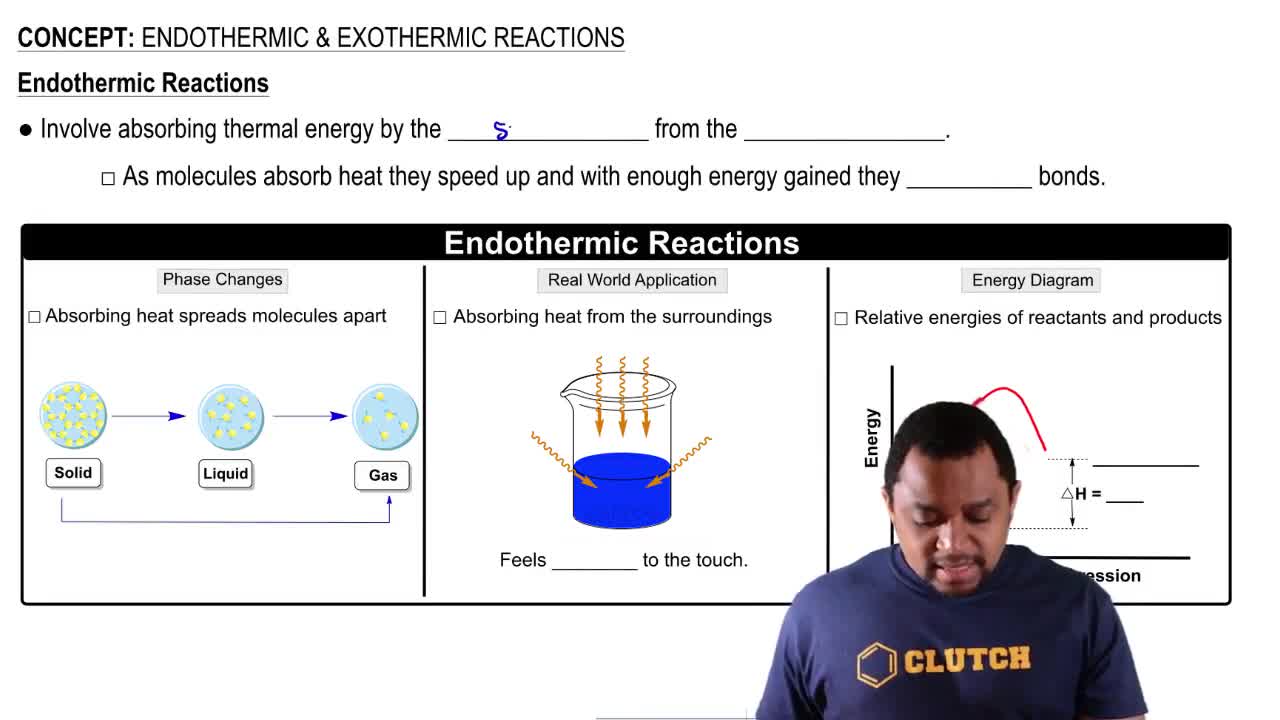Consider the following equilibrium: N2O4(g) ⇌ 2 NO2(g) Thermodynamic data on these gases are given in Appendix C. You may assume that ΔH° and ΔS° do not vary with temperature. (a) At what temperature will an equilibrium mixture contain equal amounts of the two gases?
The reaction SO2(g) + 2 H2S(g) ⇌ 3 S(s) + 2 H2O(g) is the basis of a suggested method for removal of SO2 from power-plant stack gases. The standard free energy of each substance is given in Appendix C. (d) Would you expect the process to be more or less effective at higher temperatures?

Verified Solution
Key Concepts
Le Chatelier's Principle

Gibbs Free Energy

Endothermic vs. Exothermic Reactions

The reaction SO2(g) + 2 H2S(g) ⇌ 3 S(s) + 2 H2O(g) is the basis of a suggested method for removal of SO2 from power-plant stack gases. The standard free energy of each substance is given in Appendix C. (b) In principle, is this reaction a feasible method of removing SO2?
The reaction SO2(g) + 2 H2S(g) ⇌ 3 S(s) + 2 H2O(g) is the basis of a suggested method for removal of SO2 from power-plant stack gases. The standard free energy of each substance is given in Appendix C. (c) If PSO2 = PH2S and the vapor pressure of water is 25 torr, calculate the equilibrium SO2 pressure in the system at 298 K.
When most elastomeric polymers (e.g., a rubber band) are stretched, the molecules become more ordered, as illustrated here:
Suppose you stretch a rubber band. (a) Do you expect the entropy of the system to increase or decrease?
